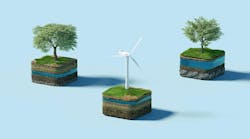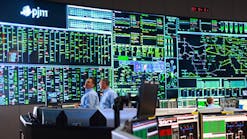Energy utilities are shifting more attention to reducing carbon emissions by embracing clean-energy technologies as societal pressures mount to move away from fossil fuels. Unfortunately, the utility industry has maintained a longstanding behind-the-scenes communications mindset to implement their clean energy strategies. This is turning into a missed opportunity to garner customer support, which will be critical in securing the resources needed to meet sustainability objectives over the long run.
Customers, it turns out, are interested in hearing about what their utility providers are doing on the sustainability front. In the J.D. Power 2021 Sustainability Index, customers were asked how seriously they rank climate change on a scale that runs from “very serious” to “there is no climate change.” Across utilities, more than 40% of customers stated that climate change is either “serious” or “very serious,” with a surprisingly small percentage saying “there is no climate change.” The customers who rank climate change as “serious” or “very serious” have indicated an interest in advocating for their utility’s clean energy plans, meaning a large percentage of the utility customer base is prepared to support sustainability investments.
The bottom line is that there is good news: utilities are actively lowering their carbon footprint. This trend is set to continue, based on data captured by the Clean Air Task Force, which notes that the percentage of US electricity sales subject to a state or utility clean energy pledge has already crossed over the 50% penetration mark.
The less sanguine news is that few utility customers are aware of the strong progress that energy providers are making to accomplish sustainability goals. For instance, the electricity sector — once heavily powered by coal — was formerly the top contributor to emissions. Their participation in sustainability initiatives has already produced demonstrable progress, with electric utilities now in the second position, as the transportation sector takes the dubious top spot of carbon emitters. The problem is that only 23% of customers are aware of the clean energy objectives that their utilities have set.
There are good examples of utilities that are taking a proactive approach to their communications with consumers. For instance, the Sacramento Municipal Utilities District (SMUD) board of directors adopted a climate emergency declaration that commits to working toward an ambitious goal of delivering carbon neutral electricity by 2030. The declaration recognizes the immediate risks to the community and demands bold action to achieve results. Similarly, NextEra Energy the parent company of Gulf Power and FPL utilities has publicly declared — and actively promoted — its goal of reducing its CO2 emissions rate by 67% prior to 2025 from an adjusted 2005 baseline.
These cases in point, however tend to be the exception rather than the rule.
Communication Breakdown
Utility providers should be leveraging their progress on clean energy to their advantage by leaning on customer engagement to promote sustainability efforts. Customer support will be critical when soliciting resources needed to upgrade their infrastructures to achieve sustainability.
There are operational imperatives to bring customers into the know because technology alone will not be enough to meet sustainability objectives. Clean energy initiatives will require customer behavior changes — along with new infrastructure investments — to achieve net-zero goals. Utilities will need to guide customers on the best times to consume electricity throughout the day and create awareness of the time blocks that will take advantage of when renewable energy is most available and encourage the adoption of new consumer technologies such as electric vehicles.
Understand to be Understood
There are a variety of reasons for the lack of communication between utilities and customers. Many utilities, for instance, opt not to include customers in communications plans about sustainability initiatives to minimize misunderstandings about potential increased out-of-pocket costs that would accrue to customers. There is a basis for this concern. Customers have indicated that they are worried about carrying the financial burden for sustainability efforts.
But silence is not the answer. Customer concerns should be addressed head on in a clear and concise manner. The fact that there is confusion in the market should prompt utilities to communicate more effectively, not less frequently. The absence of communication on these issues only serves to prolong consumers’ financial concerns and further perpetuates the disconnect. This could be tragic because next-generation renewable energy producers are likely to improve the long-term economics of utilities — and ultimately their customers.
A Better Solution
The right approach is to engage and target communications initiatives carefully, recognizing that not all customers are at the same stage of engagement on the issue of sustainability. Customers do indeed have different levels of concerns, which will have an impact on their communication needs. Understanding these diverse segments is a strategic priority in moving customers to higher stages of interest in sustainability initiatives.




